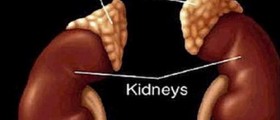
Tumors that affect salivary glands may be benign or malignant and originate form different cells. They account for approximately 2-4% of all neck neoplasms. Apart from standardized classification to benign and malignant tumors, tumors of salivary glands can also represent tumor like conditions (lesions). There are three major salivary glands, the parotid gland, submandibular gland and sublingual gland. Other, much smaller, salivary glands are scattered inside the oral cavity. In many cases tumors affect the parotid gland (70%). Remnants 30% originate from the submandibular gland and minor salivary glands.
Benign Salivary Gland Tumors Clinical Characteristics
These tumors occur in a form of painless and slow growing masses. Their location depends on the affected gland. If the growth suddenly increases in size, there is a chance that an infection, cystic degeneration or hemorrhage inside the tumor has occurred. Benign salivary gland tumors are mobile (never grow into the nearby tissue) and they do not affect surrounding nerves or blood vessels.
Because these tumors may form almost anywhere inside the oral cavity, patients report different symptoms. For instance, if the tumor is at the base of the tongue, an individual will complain about dysphagia or have globus sensation.
Some of clinical characteristic may be sufficient enough to differentiate benign from malignant lesions. So, new onset of pain, facial nerve weakness, rapid growth, parasthesias, hoarseness, skin involvement and a fixed lesion are all indicators which point to malignant tumors which require prompt evaluation and treatment.
All benign salivary gland tumors are classified into benign epithelial tumors and benign nonepithelial tumors. And there is one more group known as tumor-like lesions.
Benign Epithelial Salivary Gland Tumors
The most common benign epithelial salivary gland tumor is pleomorphic adenoma. It accounts for 85% of all salivary gland tumors. This is a mixed tumor, generally located in the tail of the parotid gland. The very name - pleomorphic is given to such tumors because of a variety of ratio of epithelial and connective tissue which make the tumor.
Pleomorphic adenoma grows slowly. It may be quite large. Treatment includes surgical resection of the tumor and the parotid gland (parotidectomy) and standard facial nerve dissection with preservation.
Benign Nonepithelial Salivary Gland Tumors
There are several nonepithelial tumors which can affect salivary glands.
In children the most common tumor of this type is hemangioma. It usually affects the parotid gland. This tumor can go through a phase of rapid growth. On the other hand, there is also chance of spontaneous tumor involution. Hemangiomas are treated with injections of corticosteroids and surgical excision.
Lymphangioma (cystic hygroma) is a tumor that originates from primitive embryonic lymph ducts. The tumor develops in a form of spongy, multiloculated masses with a yellowish/bluish surface. Treatment for this tumor is surgical excision.
Lipoma is a tumor made of fat tissue. It is soft and mobile, not painful and generally affects elderly people. Lipomas grow slowly and they are on average 3 cm in diameter.
















Your thoughts on this
Loading...